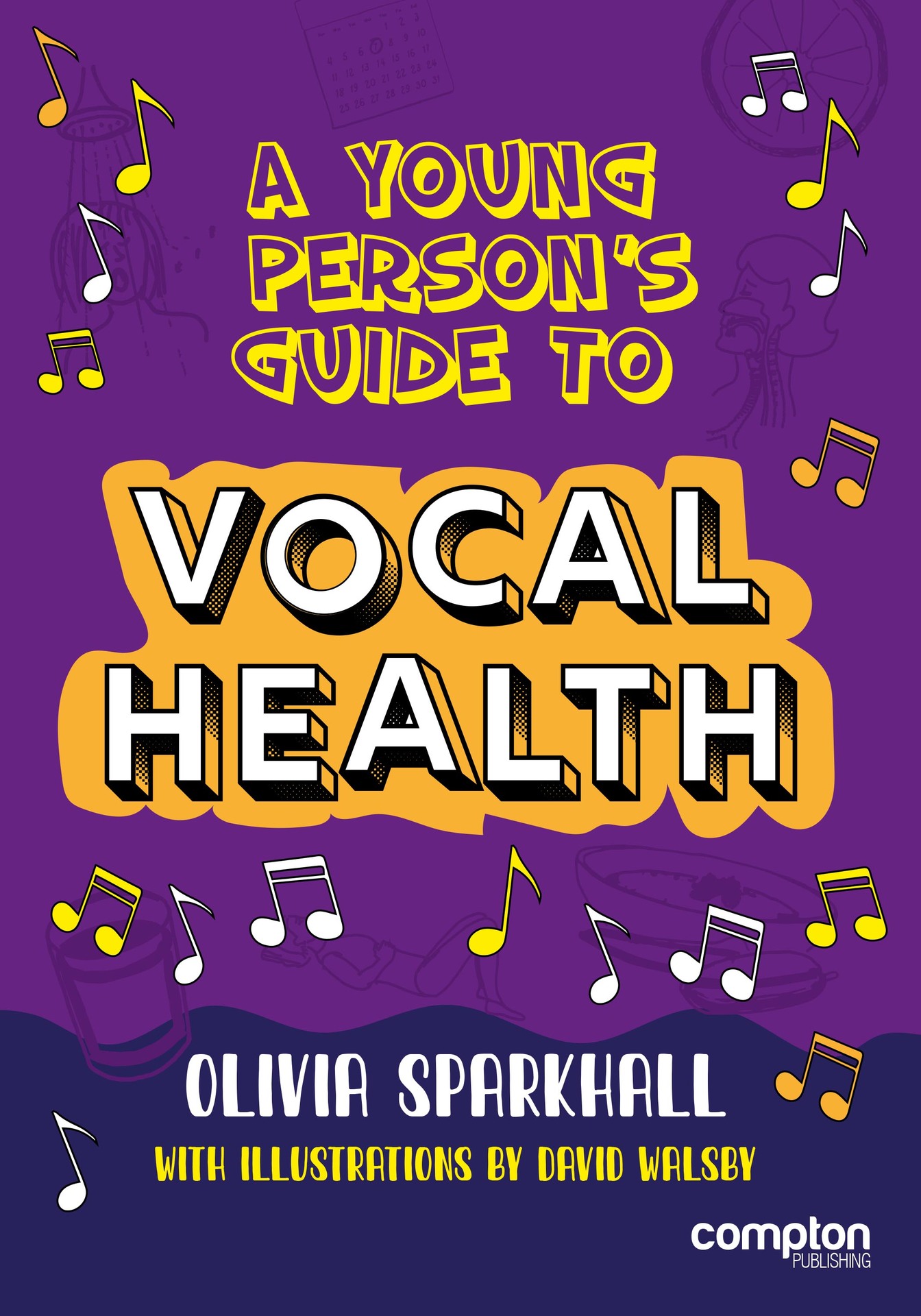What teachers should know about young people’s vocal health
Posted on 30th June 2023 at 16:03

This month, singing specialist Olivia Sparkhall shares her top tips for helping young singers look after their voices. It’s a topic that Olivia has developed a wealth of expertise in as a choir trainer, an award-winning choral conductor and as a secondary school music teacher for over 20 years.
With her new book, A Young Person’s Guide To Vocal Health, available now, Olivia reveals some key advice – and dispels some myths – to help teachers support their students to stay healthy and get the best from their voices.
As a busy secondary school teacher, who runs two school choirs and makes singing part of the music curriculum, and who also goes into primary schools to run singing workshops, I know how hard it can be to ensure that every child is using their voice well, and staying healthy. Usually, the first I know of a problem is when a child comes to me on the day of a concert with a hoarse voice, telling me that they cannot take part.
But what has happened in the days and weeks leading up to that announcement?
During my time as a choir director and teacher, I have realised that there is little voice health education offered to children. I have also heard all sorts of misinformation and myth being spread by those who simply haven’t had any training in this area. And much of the advice I’ve heard has been wrong, misleading, and in some cases likely to do more harm than good.
In this blog, I’d like to explore some of the most prevalent myths and explain some techniques music teachers can use to help their young singers get the best out of their voices. More on this subject can be found in my new book, A Young Person’s Guide to Vocal Health (Compton Publishing, £10), which is for the young singers themselves, but will also be of interest to those caring for them.

Olivia Sparkhall
Warming up and cooling down
“Warming up is a waste of time.”
I am glad to report that evidence-based research proves that this is not the case. Teaching a good warm-up routine gives children the tools they need to maintain a life-long healthy singing voice. As children’s voices start to mature they can lose flexibility, and a good warm-up can help to mitigate against any problems that might arise from this. I think it is important to remember that warm-ups are different from voice exercises. They do not need to take long, but it is good to instil the habit of always warming up first.
This short video shows that a straight-forward warm-up can be explained in a simple infographic (see page 5). The whole routine takes less than 5 minutes.
Gentle stretches help to lengthen muscles which have shortened from sitting at a desk or hunching over a computer. Exhalations can be used to awaken abdominal muscles and encourage a lengthened breath. A lip trill is a great way of achieving efficient vocal fold vibration. Finally, exploring the extended range encourages flexibility across register changes.
“I’ve never heard of cooling down.”
At the end of a singing session, cooling down resets the voice by bringing the larynx back to a relaxed state. Cooling down does not need to last long, but it is worthwhile to reposition the larynx by using lip trills, vocalisations or hums which descend to the singers’ lowest notes. Then lengthen muscles with gentle stretches, and release any tension with gentle throat, neck, and jaw massages.
What, and what not, to eat and drink
It is very easy for young people to suffer from mild dehydration, which affects their general health and well-being as well as their singing voices. Children who are dehydrated are more likely to become ill, more likely to develop voice problems, and will find phonation (the process of producing vocal sounds) harder. Encouraging a drinking routine is a good way to help a young person with a lot of distractions maintain healthy hydration levels. A good way to introduce this is to establish a good morning routine. If school-children can drink 500ml of water soon after waking, finish another 500ml before the end of their first lesson (or at first break) and drink another 500ml before lunchtime, they will be well on the way to consuming the minimum of two litres that recent research says they should drink per day.
It is worth noting that those who speak, sing, or exercise will need to drink more than this minimum amount. Carrying a water bottle should be encouraged and in many schools it is now compulsory for children to have a water bottle on their desk.
There are a lot of myths about what foods and drinks are bad for the voice. It is surprising how much ‘fact’ is not actually the case. For example, it is a myth that milk makes the body produce more mucus and should be avoided before singing. The claggy feeling of mucus hanging around in the nose and throat after eating certain foods is very short-lived and varies from person to person. There should be no blanket-ban on any foods. Despite popular belief, caffeinated drinks including coffee, tea, cola, and energy drinks are not ‘dehydrating’ and do not ‘dry out the voice’. In fact, the caffeine is a muscle relaxant which makes your brain tell you to go to the toilet more often.
The effect of hormones on boys and girls
All teenagers experience voice-change and, even though it might be more obvious in boys, there is much to be aware of in girls’ voices too. Compared to a pre-pubescent child’s larynx, a male larynx is two-thirds larger, and a female larynx one-third larger. During voice-change, which takes place during puberty, young people can find it harder to control their voices. Their range may become narrower, and their voice-quality will also change. Young people can become frustrated by the inconsistencies they experience during voice production, and this has led to many stopping singing, believing that they ‘can’t sing’. The important message is that the issues they experience are temporary and that gentle warm-ups and voice exercises can help immensely to keep the larynx flexible as their voice develops.
It is crucial for teachers to know that hormone changes can have an audible effect on girls’ voices in the week leading up to menstruation and during the first few days of their period each month. Being sensitive and understanding if a girl’s voice sounds weaker than normal, or appears less flexible with less secure intonation, can make a huge difference to girls’ self-esteem during this time. In my experience this is rarely spoken about so I have covered it in more detail in my book.
For a deeper look at the topic, and a simple, evidence-based guide for helping young singers keep their voices in shape, A Young Person’s Guide to Vocal Health by Olivia Sparkhall is available now from: http://www.comptonpublishing.co.uk
Share this post:




